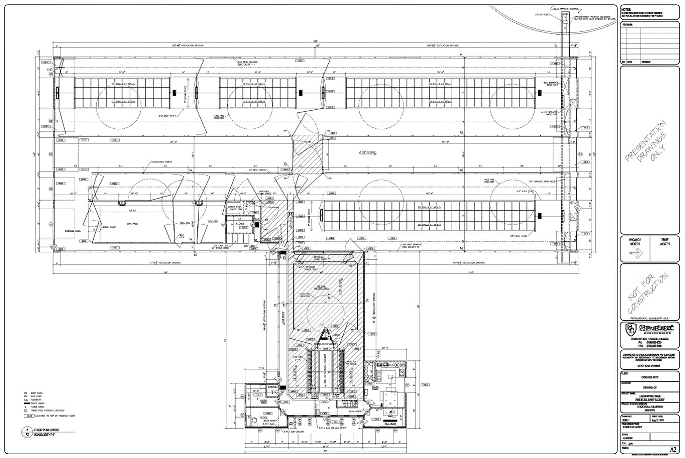

The cow-feed alley is the alley between the row of free stalls and the feed manger. Double stall platforms should be 18 ft long. The minimum alley width should be 2.4 m (8 ft), but if a skid steer is used to bed the stalls and has to turn 90° to the stall, then the alley width should be 3 m (10 ft). The alley width will depend on the type of equipment used to clean the alleys and bed the stalls. Cow traffic alleys Cow traffic alleys are the cow walkways between the rows of free stalls in tail-to-tail barns, and between the outside row of stalls and the wall in head-to-head barns. If the platform length is less than 5.5 m (18 ft), cows may be reluctant to lay in stalls directly across from each other. Double stalls The platform length of a double row of free stalls in a head-to-head arrangement should be 5.5 m (18 ft) (Figure 1) to allow the cow to lunge forward without interfering with the cow in the stall directly across.

Single stall The platform length for a single row of free stalls in a tail-to-tail arrangement should be 3 m (10 ft) long to the outside wall to allow for lunge room but can be 2.7 m (9 ft) long on the row next to the feed alley, as they can lunge into the alley space.

Stalls Free-stall widths for Holstein cows should be 122 cm (48 in.), 132 cm (52 in.) and 137 cm (54 in.) for first lactation, milking and dry cows, respectively. Component designĭecide on the individual components first, then determine how they will fit together best to form the complete plan. This is where all the free-stall barn components come together to develop a plan that is functional, flexible, expandable and cost-effective. The housing layout or floor plan of a dairy barn is the most important document in the design process.


 0 kommentar(er)
0 kommentar(er)
